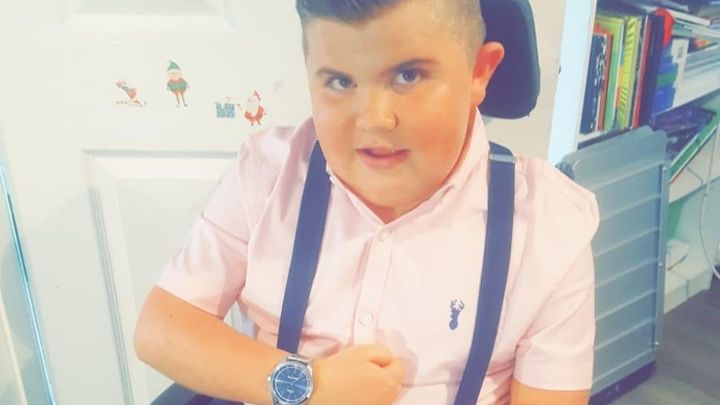
Support Ethan Jay Lewis
Donation protected
 hi this is ethan Jay Lewis he suffers from Duchenne musculer dystrophy. As you can imagine being wheelchair bound, Ethan is not able to do the things most 12 year olds can. Ethan has missed out on so much in his life and he does feel it a lot, but he always seems to have a smile on his face. Last summer all he wanted was to go to the beach with his brother and sister, but being wheelchair bound this was not possible. So with a heavy heart I'm setting up this page to ask for donations towards a disability beach buggy. Any donations would be greatly appreciated no matter how small. The buggy he has is eye on can also be used in the snow, this would allow him to go out with his friends this winter like a 12 year old boy should.
hi this is ethan Jay Lewis he suffers from Duchenne musculer dystrophy. As you can imagine being wheelchair bound, Ethan is not able to do the things most 12 year olds can. Ethan has missed out on so much in his life and he does feel it a lot, but he always seems to have a smile on his face. Last summer all he wanted was to go to the beach with his brother and sister, but being wheelchair bound this was not possible. So with a heavy heart I'm setting up this page to ask for donations towards a disability beach buggy. Any donations would be greatly appreciated no matter how small. The buggy he has is eye on can also be used in the snow, this would allow him to go out with his friends this winter like a 12 year old boy should.
Duchenne MD mostly affects boys. Girls can occasionally be affected, although the condition tends to be milder.
Children with Duchenne MD usually start to have noticeable symptoms between 1 and 3 years of age. The muscles around their pelvis and thighs tend to be affected first and often appear bulkier than normal.
A child with Duchenne MD may:
have difficulty walking, running or jumping
have difficulty standing up
learn to speak later than usual
be unable to climb the stairs without support
have behavioural or learning difficulties
Children with Duchenne MD may need a wheelchair by the time they're 12 years old, as their muscles weaken and they lose the ability to walk. They can also develop scoliosis, where the spine begins to curve sideways. This can lead to one shoulder or hip being higher than the other.
By their mid-teens, some people with Duchenne MD will develop dilated cardiomyopathy. This condition affects the heart muscles, causing the heart's chambers to enlarge and the walls to get thinner.

By their late-teens or early 20s, people with Duchenne MD may start to have breathing problems. The condition can also affect the intercostal muscles (muscle tissue between the ribs) and the diaphragm (the large, thin sheet of muscle between the chest and abdomen).
Once the heart and respiratory muscles are damaged, Duchenne MD becomes life-threatening. With medical care, most people with Duchenne MD die from heart or respiratory failure before or during their 30s.


Organizer and beneficiary
Michael Lloyd
Organizer
Joanne Curtis
Beneficiary